Costanza Armanini
ZodiAq: An Isotropic Flagella-Inspired Soft Underwater Drone for Safe Marine Exploration
Mar 25, 2025

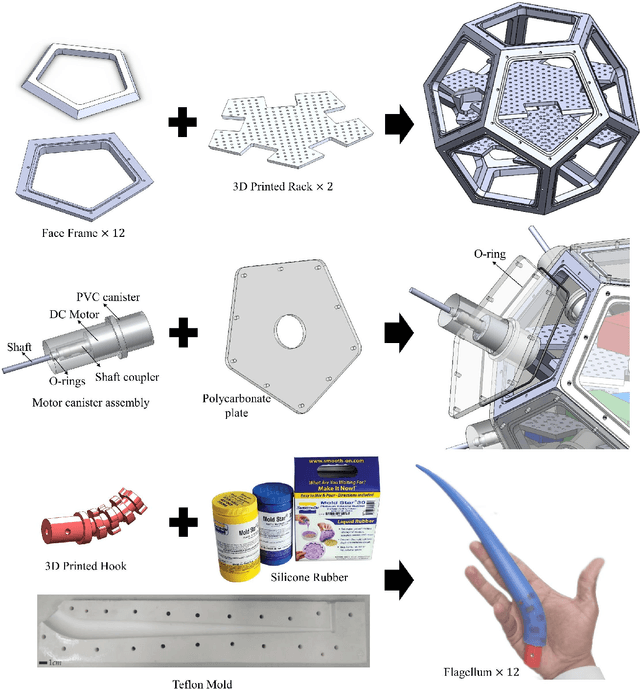

Abstract:The inherent challenges of robotic underwater exploration, such as hydrodynamic effects, the complexity of dynamic coupling, and the necessity for sensitive interaction with marine life, call for the adoption of soft robotic approaches in marine exploration. To address this, we present a novel prototype, ZodiAq, a soft underwater drone inspired by prokaryotic bacterial flagella. ZodiAq's unique dodecahedral structure, equipped with 12 flagella-like arms, ensures design redundancy and compliance, ideal for navigating complex underwater terrains. The prototype features a central unit based on a Raspberry Pi, connected to a sensory system for inertial, depth, and vision detection, and an acoustic modem for communication. Combined with the implemented control law, it renders ZodiAq an intelligent system. This paper details the design and fabrication process of ZodiAq, highlighting design choices and prototype capabilities. Based on the strain-based modeling of Cosserat rods, we have developed a digital twin of the prototype within a simulation toolbox to ease analysis and control. To optimize its operation in dynamic aquatic conditions, a simplified model-based controller has been developed and implemented, facilitating intelligent and adaptive movement in the hydrodynamic environment. Extensive experimental demonstrations highlight the drone's potential, showcasing its design redundancy, embodied intelligence, crawling gait, and practical applications in diverse underwater settings. This research contributes significantly to the field of underwater soft robotics, offering a promising new avenue for safe, efficient, and environmentally conscious underwater exploration.
The Role of Functional Muscle Networks in Improving Hand Gesture Perception for Human-Machine Interfaces
Aug 05, 2024Abstract:Developing accurate hand gesture perception models is critical for various robotic applications, enabling effective communication between humans and machines and directly impacting neurorobotics and interactive robots. Recently, surface electromyography (sEMG) has been explored for its rich informational context and accessibility when combined with advanced machine learning approaches and wearable systems. The literature presents numerous approaches to boost performance while ensuring robustness for neurorobots using sEMG, often resulting in models requiring high processing power, large datasets, and less scalable solutions. This paper addresses this challenge by proposing the decoding of muscle synchronization rather than individual muscle activation. We study coherence-based functional muscle networks as the core of our perception model, proposing that functional synchronization between muscles and the graph-based network of muscle connectivity encode contextual information about intended hand gestures. This can be decoded using shallow machine learning approaches without the need for deep temporal networks. Our technique could impact myoelectric control of neurorobots by reducing computational burdens and enhancing efficiency. The approach is benchmarked on the Ninapro database, which contains 12 EMG signals from 40 subjects performing 17 hand gestures. It achieves an accuracy of 85.1%, demonstrating improved performance compared to existing methods while requiring much less computational power. The results support the hypothesis that a coherence-based functional muscle network encodes critical information related to gesture execution, significantly enhancing hand gesture perception with potential applications for neurorobotic systems and interactive machines.
Soft Robots Modeling: a Literature Unwinding
Dec 07, 2021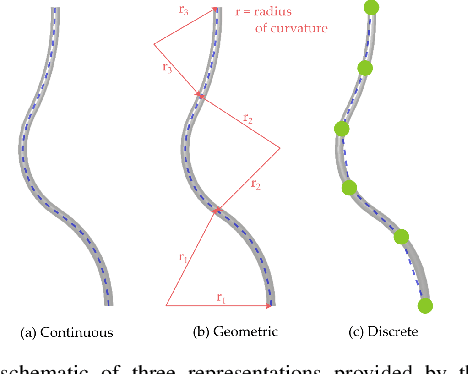

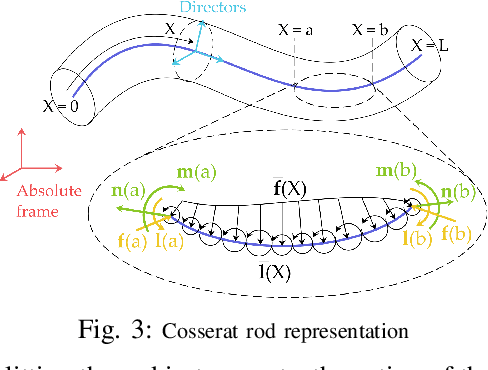
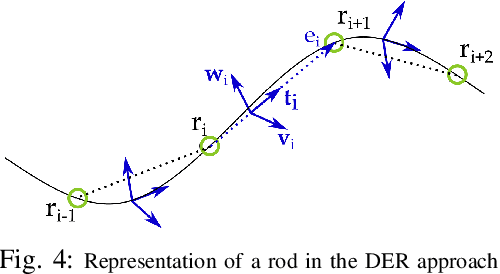
Abstract:The robotics community has seen an exponential growth in the level of complexity of the theoretical tools presented for the modeling of soft robotics devices. Different solutions have been presented to overcome the difficulties related to the modeling of soft robots, often leveraging on other scientific disciplines, such as continuum mechanics and computer graphics. These theoretical foundations are often taken for granted and this lead to an intricate literature that, consequently, has never been the subject of a complete review. Withing this scenario, the objective of the presented paper is twofold. The common theoretical roots that relate the different families of modeling techniques are highlighted, employing a unifying language that ease the analysis of their main connections and differences. Thus, the listing of the approaches naturally follows and a complete, untangled, review of the main works on the field is finally provided.
SoRoSim: a MATLAB Toolbox for Soft Robotics Based on the Geometric Variable-strain Approach
Jul 12, 2021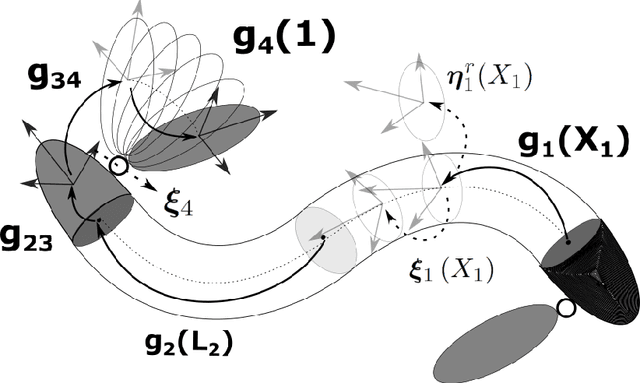



Abstract:Soft robotics has been a trending topic within the robotics community for almost two decades. However, the available tools for the community to model and analyze soft robotics artifacts are still limited. This paper presents the development of a user-friendly MATLAB toolbox, SoRoSim, that integrates the Geometric Variable Strain model to facilitate the modeling, analysis, and simulation of hybrid rigid-soft open-chain robotic systems. The toolbox implements a recursive, two-level nested quadrature scheme to solve the model. We demonstrate several examples and applications to validate the toolbox and explore the toolbox's capabilities to efficiently model a vast range of robotic systems, considering different actuators and external loads, including the fluid-structure interactions. We think that the soft-robotics research community will benefit from the SoRoSim toolbox for a wide variety of applications.
 Add to Chrome
Add to Chrome Add to Firefox
Add to Firefox Add to Edge
Add to Edge